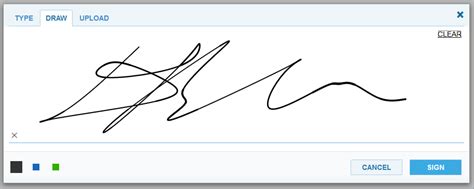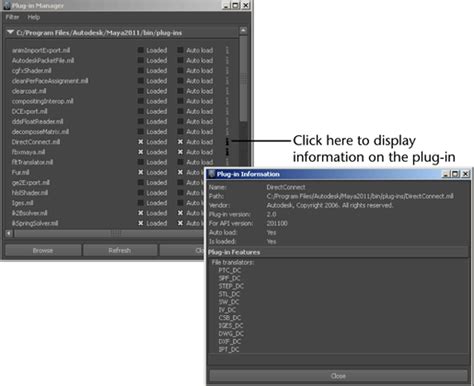One drive linux
Author: e | 2025-04-24

I dual boot Windows XP with Linux on two separate hard drives. One hard drive for Windows XP and one hard drive for Linux. Just connect one hard drive at a time and install

One way sync with either Dropbox or Google drive on linux and
Linux is a family of open-source operating systems. They are based on the Linux kernel and are free to download. They can be installed on either a Mac or Windows computer. Here’s how to install Linux on a Windows 10 PC. If you want to dual boot Linux and Windows, you will need to create a space for your Linux OS to live. In order to do this, you will have to partition your main hard drive. Here’s how to do that:How to Partition a Hard Drive in Windows 10Open the Windows Search Bar. This is the magnifying glass-shaped icon in the bottom-left corner of your screen. Then type “DISKMGMT.MSC” in the search bar and hit enter. Right-click on your main hard drive and select Shrink Volume. If you have more than one drive, make sure to choose the one that says Primary Partition. This will usually be labeled as the C: drive. Then choose how much you want to shrink your drive. It is recommended that you set aside at least 20GB (20,000MB) for Linux. Finally, click Shrink. Once you have a designated space to install Linux, you’ll need to write a Linux Distro onto a USB thumb drive or external drive 4GB or larger. Here’s how to do that:How to Make a Linux Bootable USBDownload a Linux distro in ISO format. An ISO file is a disk image. Some of the top options are Ubuntu, Mint, or Fedora. They are free to download from each distribution’s main website. For this article, we are using Ubuntu. Insert the USB drive into your computer. You might be asked to format your drive. This will erase all the data stored on your drive, so make sure to back up your files before you begin. Download Rufus. You can find the latest version of the application here. Open Rufus and select your USB drive from the Device list. If you don’t know which drive to use, eject all other drives until you only have one to choose from. Under Boot Selection, click the Select button and choose the ISO file you downloaded I dual boot Windows XP with Linux on two separate hard drives. One hard drive for Windows XP and one hard drive for Linux. Just connect one hard drive at a time and install I don't use One Drive though. I have the One Drive account located as a bookmark/favorite on my Bookmarks Toolbar in linux Pale Moon, linux Waterfox and linux Firefox browers in both linux Mint and also in MX Linux. So if a person has a Microsoft Office account, they also can use their username and password for Office and gain access to One Drive. How to Format a Linux Hard DriveFormating a Linux hard drive is a crucial step before installing a new Linux distribution or reusing an old one. In this article, we will guide you through the process of formatting a Linux hard drive in a step-by-step manner.Why Format a Linux Hard Drive?Before we dive into the process of formatting a Linux hard drive, it is essential to understand why formatting is necessary. Formatting a hard drive erases all data on the drive, making it a blank slate. This is important because:Removing malware: If your hard drive was infected with malware, formatting it will remove the infection and prevent it from spreading.Removing user data: If you no longer need the data on your hard drive, formatting it will erase all files and folders, freeing up space for new data.Preparing for a new installation: Formatting a hard drive is a necessary step before installing a new Linux distribution.Tools and Software NeededTo format a Linux hard drive, you will need:A Linux distribution: You can use any Linux distribution, such as Ubuntu, Fedora, or Debian, to format your hard drive.A disk utility tool: The fdisk and mkfs commands are built-in disk utility tools that come with most Linux distributions.The hard drive: Make sure the hard drive you want to format is connected and recognized by your system.Step-by-Step Guide to Formatting a Linux Hard Drive1. Identify the Hard DriveUse the fdisk command to list all available hard drives and identify the one you want to format:fdisk -lThis command will list all hard drives connected to your system, including their size, partition scheme, and file system.2. Check for Existing PartitionsUse the fdisk command to check if there are any existing partitions on the hard drive:fdisk /dev/sdbReplace /dev/sdb with the device name of the hard drive you want to format.If there are existing partitions, you will need to delete them before formatting the drive.3. Delete Existing PartitionsUse the d command to delete an existing partition:fdisk /dev/sdbdChoose the partition you want to delete and press w to write the changes to the disk.4. Create a New PartitionUse the nComments
Linux is a family of open-source operating systems. They are based on the Linux kernel and are free to download. They can be installed on either a Mac or Windows computer. Here’s how to install Linux on a Windows 10 PC. If you want to dual boot Linux and Windows, you will need to create a space for your Linux OS to live. In order to do this, you will have to partition your main hard drive. Here’s how to do that:How to Partition a Hard Drive in Windows 10Open the Windows Search Bar. This is the magnifying glass-shaped icon in the bottom-left corner of your screen. Then type “DISKMGMT.MSC” in the search bar and hit enter. Right-click on your main hard drive and select Shrink Volume. If you have more than one drive, make sure to choose the one that says Primary Partition. This will usually be labeled as the C: drive. Then choose how much you want to shrink your drive. It is recommended that you set aside at least 20GB (20,000MB) for Linux. Finally, click Shrink. Once you have a designated space to install Linux, you’ll need to write a Linux Distro onto a USB thumb drive or external drive 4GB or larger. Here’s how to do that:How to Make a Linux Bootable USBDownload a Linux distro in ISO format. An ISO file is a disk image. Some of the top options are Ubuntu, Mint, or Fedora. They are free to download from each distribution’s main website. For this article, we are using Ubuntu. Insert the USB drive into your computer. You might be asked to format your drive. This will erase all the data stored on your drive, so make sure to back up your files before you begin. Download Rufus. You can find the latest version of the application here. Open Rufus and select your USB drive from the Device list. If you don’t know which drive to use, eject all other drives until you only have one to choose from. Under Boot Selection, click the Select button and choose the ISO file you downloaded
2025-04-10How to Format a Linux Hard DriveFormating a Linux hard drive is a crucial step before installing a new Linux distribution or reusing an old one. In this article, we will guide you through the process of formatting a Linux hard drive in a step-by-step manner.Why Format a Linux Hard Drive?Before we dive into the process of formatting a Linux hard drive, it is essential to understand why formatting is necessary. Formatting a hard drive erases all data on the drive, making it a blank slate. This is important because:Removing malware: If your hard drive was infected with malware, formatting it will remove the infection and prevent it from spreading.Removing user data: If you no longer need the data on your hard drive, formatting it will erase all files and folders, freeing up space for new data.Preparing for a new installation: Formatting a hard drive is a necessary step before installing a new Linux distribution.Tools and Software NeededTo format a Linux hard drive, you will need:A Linux distribution: You can use any Linux distribution, such as Ubuntu, Fedora, or Debian, to format your hard drive.A disk utility tool: The fdisk and mkfs commands are built-in disk utility tools that come with most Linux distributions.The hard drive: Make sure the hard drive you want to format is connected and recognized by your system.Step-by-Step Guide to Formatting a Linux Hard Drive1. Identify the Hard DriveUse the fdisk command to list all available hard drives and identify the one you want to format:fdisk -lThis command will list all hard drives connected to your system, including their size, partition scheme, and file system.2. Check for Existing PartitionsUse the fdisk command to check if there are any existing partitions on the hard drive:fdisk /dev/sdbReplace /dev/sdb with the device name of the hard drive you want to format.If there are existing partitions, you will need to delete them before formatting the drive.3. Delete Existing PartitionsUse the d command to delete an existing partition:fdisk /dev/sdbdChoose the partition you want to delete and press w to write the changes to the disk.4. Create a New PartitionUse the n
2025-04-10Files and directories within a system. Make sure to run this command with a flag or a parameter, or it will only show the content on the current working directory.The "cat" commandThe "cat" command is also known as the Concatenate command. It is one of the most frequent commands that list, combine and write file content to the standard output.The "cp" commandThis command is usually used for copying files or directories and their content. The "mv" commandThis command is mainly used for moving and renaming files and directories and doesn't produce any output upon execution.The "mkdir" commandThis command is mainly used for creating one or multiple directories at once. Moreover, we can also set permissions for every guide using this command.The "rmdir" commandThis command is usually used for deleting or emptying the directory. It is always advised to run this command along with sudo privileges in the parent directory for successful access.The "rm" commandThis command is also used for deleting particular files within a directory. One has to use permissions while using this command for successful execution.Final WordsWe hope you guys have understood how to format disks in Linux. Linux is one of the leading open-source Unix operating systems on Linux Kernel. Formatting a drive on Linux is not a complicated process. You must focus on a few things and be perfectly done with them. We have provided you with a detailed method for effectively formatting the ext4 file system, fat32 file system, and NTFS. We also have added here some of the most common commands for Linux. Make the built-in tools included in your Linux operating system and manipulate the drive partitions per your preferences.Format Disk Linux FAQs1. What is disk formatting in Linux?It is the process that prepares the Linux operating system for initial use. Formatting is used for releasing the storage space on a device. Usually, one or more file systems are created during the Linux formatting.2. How do I format a Linux Server?If you are willing to remove the Linux, we advise you to back up your information. 3. How do I wipe a drive in Linux?Wiping out a drive on Linux is not a complicated process at all. We have provided you with three simple and accessible methods to enable the above. You can easily pick up the one depending upon your preferences.
2025-04-16